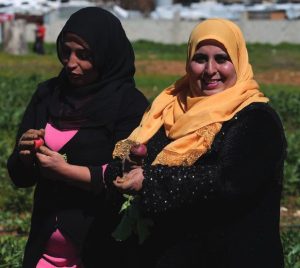Refugee outlook disturbing
Two recent reports from the United Nations refugee agency UNHCR paint a grim picture for refugees in coming years.
The reports say around 2.9 million refugees, those at most risk, will need resettlement in 2025; and that at the end of 2023 almost 120 million people worldwide were forcibly displaced due to persecution, conflict, violence, human rights violations and public disorder.
The ‘Projected global resettlement needs 2025’ summary report estimates about 2.9 million refugees will need resettlement in 2025, an increase of about half a million compared to 2024, and more than double compared to 2021.
The Asia and Pacific region continues to have the largest resettlement needs globally, with 776,500 refugees, an increase by about 6 per cent compared to 2024. This reflects high needs of Afghan refugees and Rohingya refugees.
 The Middle East and North Africa region increased by about 50 per cent due to growing economic challenges and increased protection risks such as child labour exploitation. The region also saw a notable increase in resettlement needs in Lebanon – up by about 200,000 people.
The Middle East and North Africa region increased by about 50 per cent due to growing economic challenges and increased protection risks such as child labour exploitation. The region also saw a notable increase in resettlement needs in Lebanon – up by about 200,000 people.
In the East and Horn of Africa and Great Lakes region 601,300 refugees are projected to be in need of resettlement. The report says that in this region even countries of asylum are facing increasing pressure caused by new forced displacement, climate change, and economic shocks.
The West and Central Africa region saw and increase of almost 60 per cent, mostly driven by the new crisis in Sudan.
In Southern Africa, 125,300 refugees are projected to need resettlement, mostly from the Central African Republic and the Democratic Republic of the Congo.
The Americas region saw a projected increase of 70 per cent because of the unprecedented levels of forced displacement in the region, including movements from South America to northern countries through the perilous Darién Gap
In Europe, it is projected that 350,000 refugees will need resettlement from Türkiye.
The report said the largest populations in need of resettlement in 2025 will be: Syrians – 933,000; Afghans – 558,000; South Sudanese – 242,000; people from Myanmar – 226,000; Sudanese – 172,000, and; people from the Democratic Republic of Congo – 158,000.
The report says that in 2023, UNHCR made resettlement submissions for 155,486 refugees located in 96 countries of asylum, to 24 resettlement countries – an increase of 33 per cent compared to 2022.
During 2023, 96,311 refugees departed on resettlement journeys, an increase of 65 per cent compared to 2022.
The UNHCR ‘Global Trends: Forced Displacement in 2023’ report found that at the end of 2023, an estimated 117.3 million people worldwide were forcibly displaced due to persecution, conflict, violence, human rights violations and events seriously disturbing the public order.
The report says that in 2023, Australia recognised 14,669 refugees and resettled 15,223 refugees.
These numbers made up just 1% of the 2,909,242 refugees recognised or resettled globally in 2023.
Australia was 26th globally for refugees recognised and resettled in 2023.
Australia resettled the third highest number of refugees with 15,223. The USA and Canada were the top two countries of resettlement and together received 79.5 per cent of the refugees resettled in 2023.
See the two reports in full:












